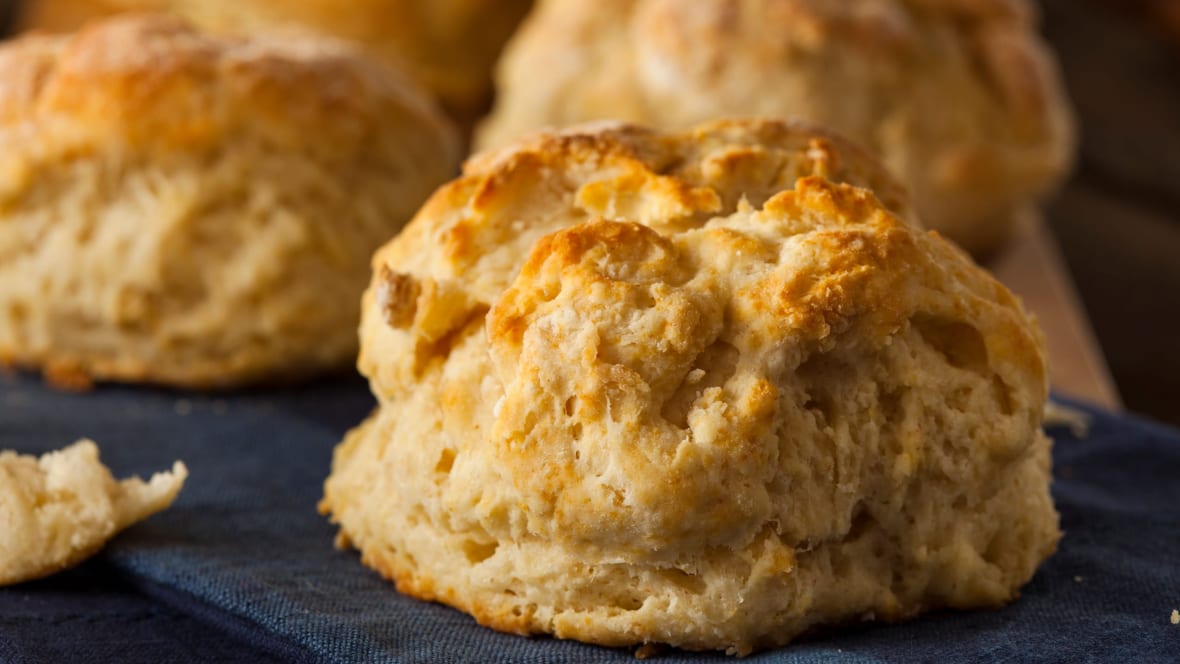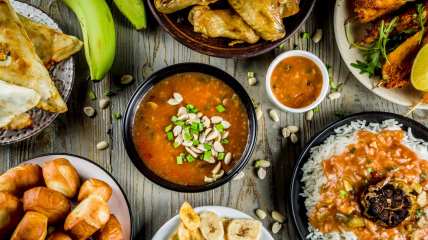History on a plate: the community and culture baked into biscuits
Food is more than sustenance; many dishes that are synonymous with Black culture in America are cross-cultural, like the well-loved biscuit.
Biscuits can bring us together.
All food can, for that matter. Food bridges cultural divides, as noted in a study by Michigan State University. Ghanaian-American Chef Kuukua Dzigbordi Yomekpe agrees, recently telling theGrio how she uses food to unite people and learn about different traditions.
Each year, we celebrate Black History Month, which recognizes the accomplishments and contributions of Black people. Through food, we can take these lessons one step further. All of the foods Black people love — from mac and cheese to potato salad to sweet potatoes — have roots in other cultures. Exploring those commonalities can help us learn a little more about each other. In essence, these foods can help bring us together.
For example, biscuits have cemented their place in American comfort food lore. According to a Harris Poll survey, more than seven out of 10 Americans would order a biscuit while eating out, and equal numbers say they would eat one at breakfast or dinner.

Biscuits are remarkably flexible. You can have them in the morning with butter and jelly (my favorite way to eat them). You can make little sandwiches at lunch, stuffed with a fried chicken thigh or a piece of country ham. They’re great with a southern dinner and make excellent dessert shortcakes.
My grandmother taught me how to make biscuits. She taught me how to handle the dough gently, roll it out, and bake it at the right temperature.
We bonded over biscuits, though they almost got me in trouble once.
We were in a supermarket in The Bronx, N.Y. when I noticed canned biscuits. I’d never seen such a thing and picked one up. I looked at my grandmother, pointed at the can, and she said the one word that stops little Black boys dead in their tracks when it comes from a mama or auntie.
“Boy…” she said with her voice trailing off.
The one-word lesson: Biscuits don’t come out of a can. They come out of a cook’s love.
I spent my entire youth believing that Black people — probably my South Carolinian family — invented biscuits. I’d never seen anyone else make them.
Over time, I realized lots of people made biscuits, but until I spent three years in Oklahoma, I never realized how biscuits could mean community.
In the little town where I lived and worked as a journalist, I saw everybody baking and eating biscuits. They sat around tables at this local restaurant, playfully arguing over who made the best biscuits, how it’s heresy not to use lard, and the intricacies of homemade sausage vs. bacon gravy.
“Boy … “
Bread baking goes back about 14,000 years. With no leavening agents to make the dough rise, early bread bakers made various flatbreads based on available grains. By about 1000 BC, bakers used yeast in bread, but it wasn’t a perfect process.
It seems cooks during the Roman Empire made the first biscuits, a re-baked bread that turned crisp, according to English Heritage.
By the 19th century, homesteaders in America figured out they could create a leavening agent from milk, cornmeal, and potatoes, according to the Chicago Tribune. That was the forerunner to the sourdough starter, and families used it for all sorts of baked goods — including the modern biscuit.
All different cultures have had a stake in the biscuit and its development. Whether you’re in Oklahoma, South Carolina, or any place in America, discussions over who makes the best biscuit can be as contentious as who makes the best barbecue.
I’m biased. I’ll stick with my grandmother’s biscuits. I still love this simple recipe that she taught me as a young boy.
MY GRANDMOTHER’S BISCUITS
What you’ll need
A clean surface to turn out the dough
Extra flour for the surface
Biscuit cutter or glass
9 x 13 sheet pan
Baking mat or parchment paper
MAKES 6 BISCUITS
2 cups all-purpose flour
1 tablespoon of baking powder
I tablespoon of sugar
1 teaspoon of salt
6 tablespoons of cold lard (or cold butter if you want to avoid lard)
1 egg, beaten
2/3 cup of buttermilk (while you can use whole milk, the acidity and fat in buttermilk helps the biscuits rise)
2 tablespoons of melted butter
Directions:
Preheat the oven to 450 degrees.
Place the baking mat or parchment paper on the sheet pan
- In a large bowl, combine the dry ingredients (flour, baking powder, sugar, and salt) and stir together.
- Cube the lard or butter, and then, using two knives or a pastry cutter, cut the fat into the flour until it mostly resembles small peas (it’s OK to have larger pieces here and there). Don’t use your hands. The heat from your hands will start to warm the fat, which will hurt the rise.
- Add the beaten egg and the buttermilk to the flour and gently mix with a fork until just combined. You should have a fairly crumbly mixture.
- Turn the flour mixture onto a lightly floured surface and work the dough until it comes together. Bring the dough into a half-inch-high round.
- Flour your biscuit cutter or drinking glass and cut the dough into 6 biscuits. You should get three to four biscuits on the first attempt. You’ll have to gather the dough, gently bring it together, and cut the remaining biscuits.
- When all the biscuits have been cut, add them to the sheet pan.
- Liberally brush the melted butter over the biscuits.
- Add to the hot oven for 12-15 minutes, until the tops of the biscuits brown and they’re tall and fluffy.
If you want to give the biscuits a little kick, after applying the melted butter, you can top them with sugar; cinnamon; cinnamon and sugar (in a 1:1 measurement, so one tablespoon for each ingredient), or a dollop of honey.

Ray Marcano is a veteran journalist who loves to cook and write about food. He’s the former national president of the Society of Professional Journalists, a two-time Pulitzer juror, and a Fulbright Fellow.
TheGrio is FREE on your TV via Apple TV, Amazon Fire, Roku, and Android TV. TheGrio’s Black Podcast Network is free too. Download theGrio mobile apps today! Listen to ‘Writing Black‘ with Maiysha Kai.


